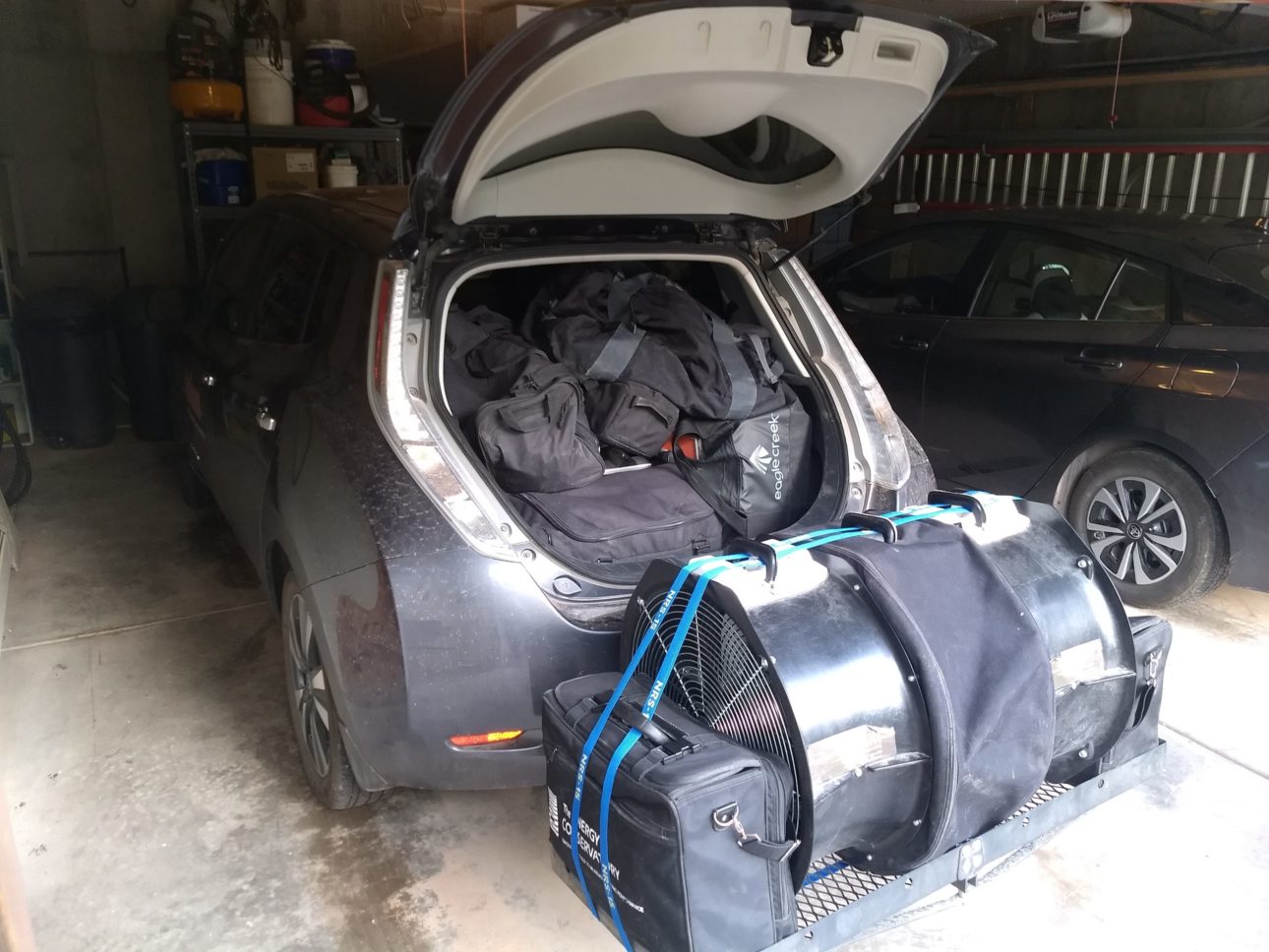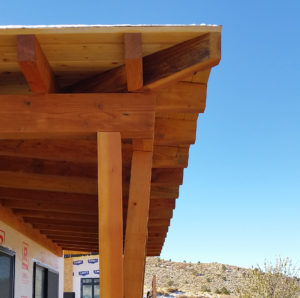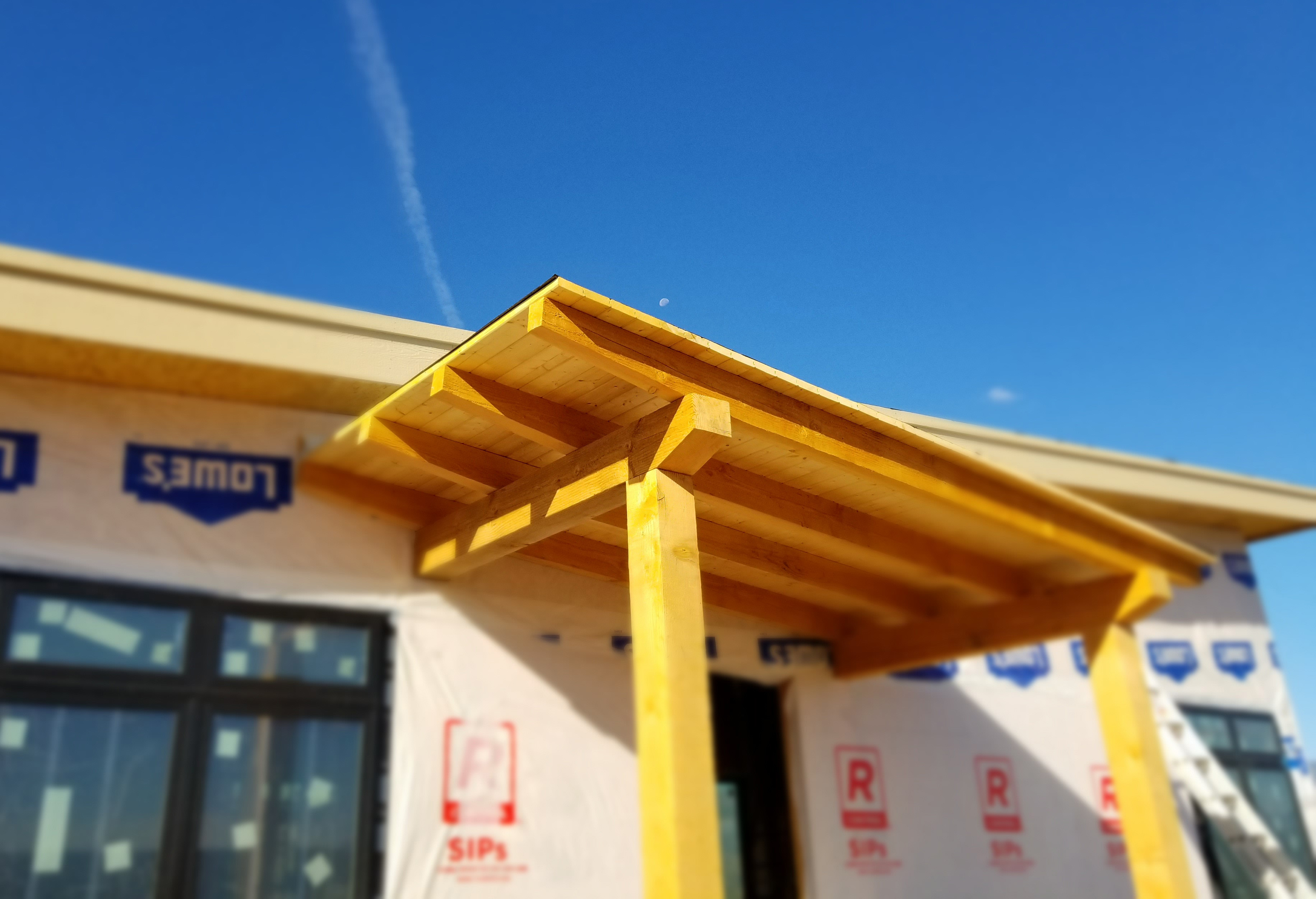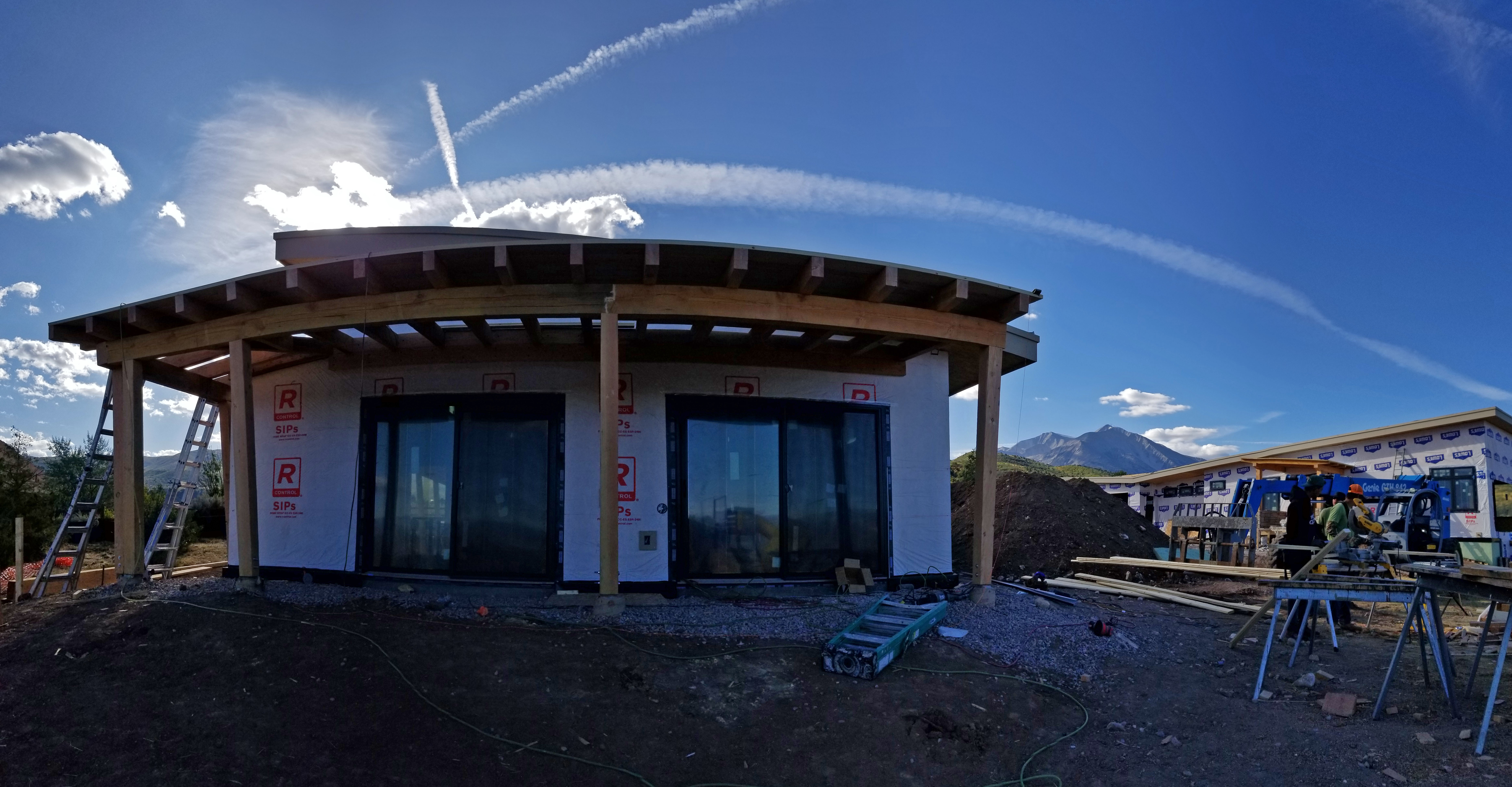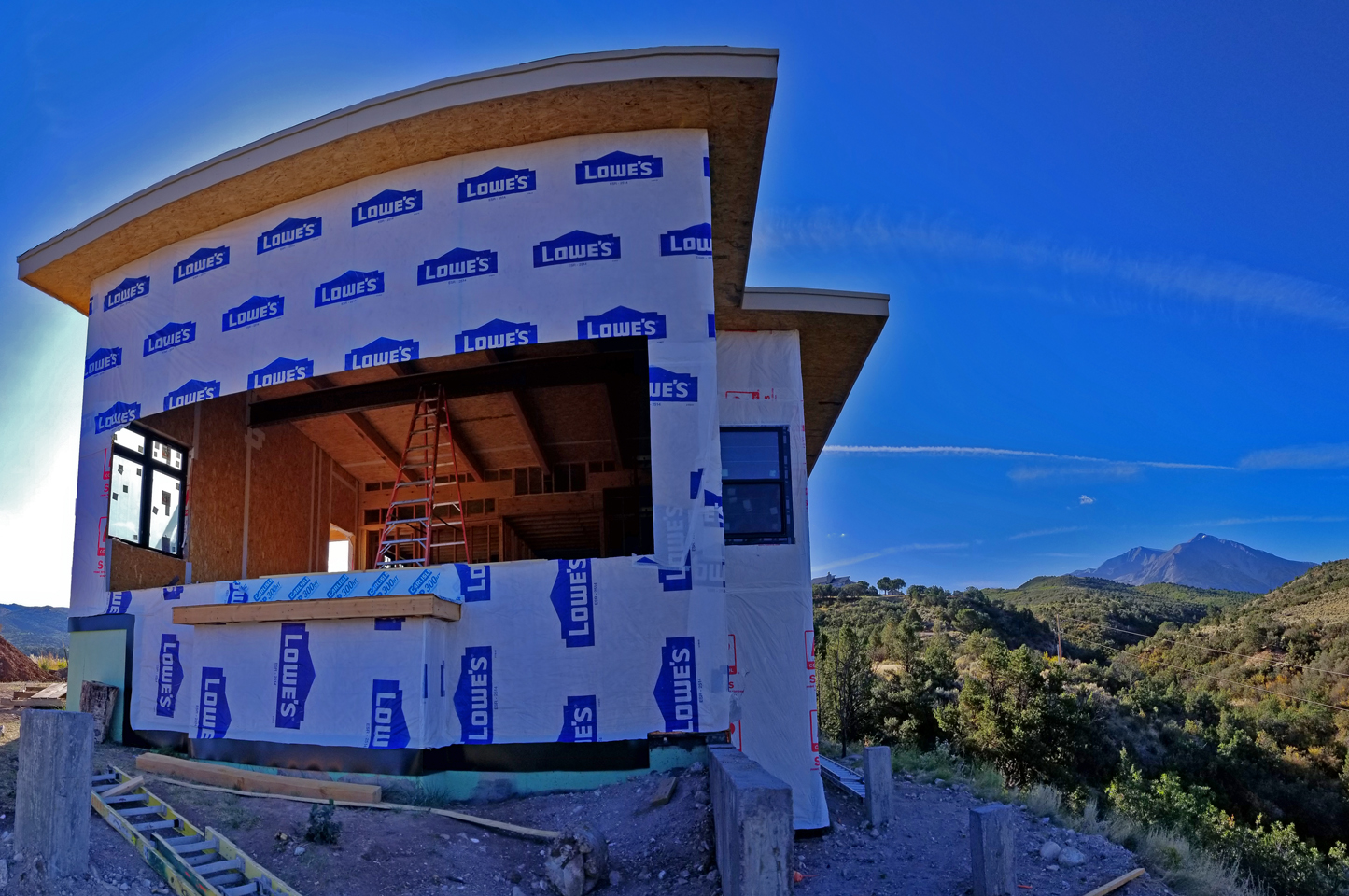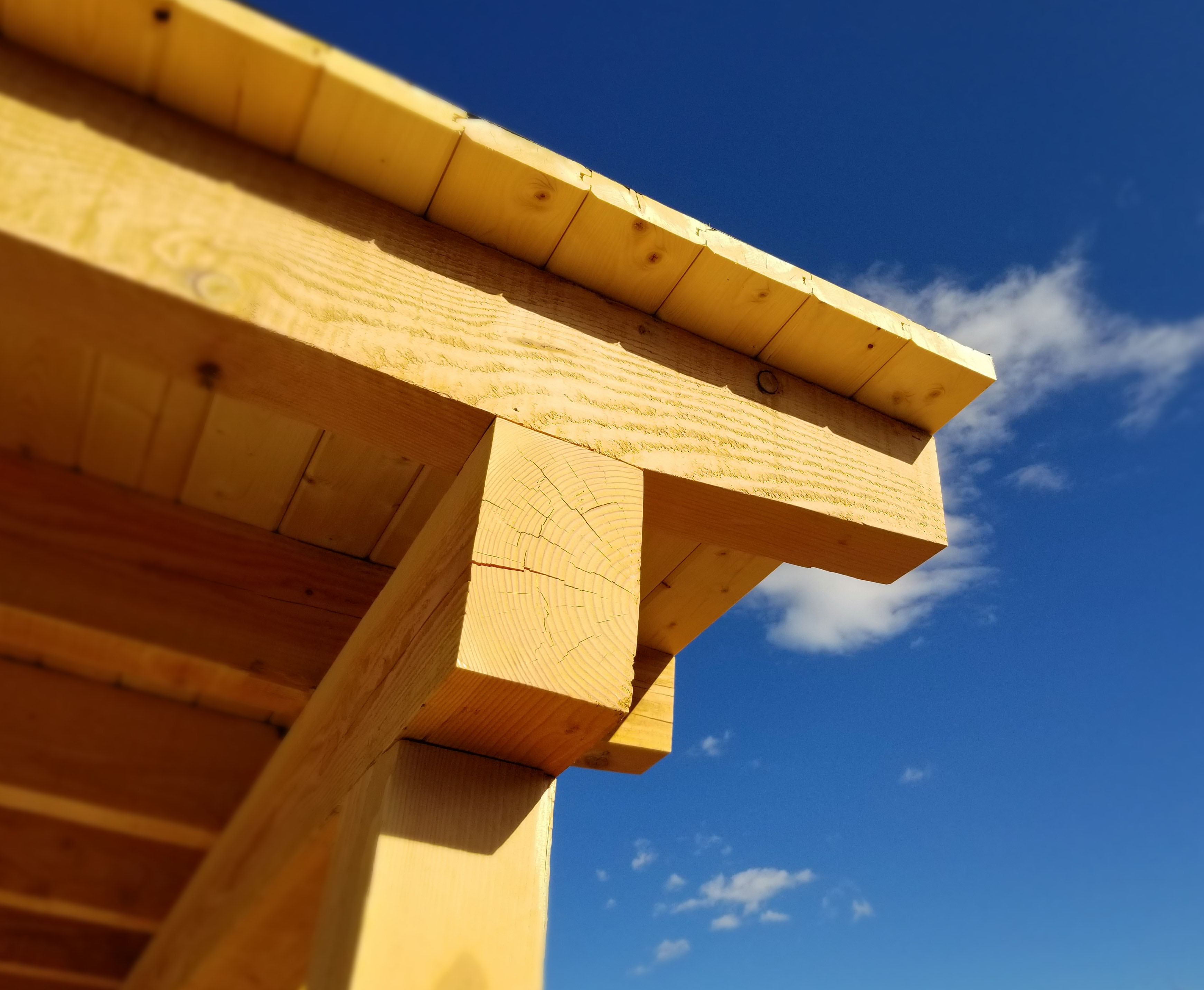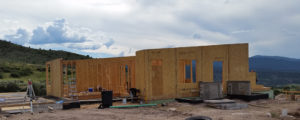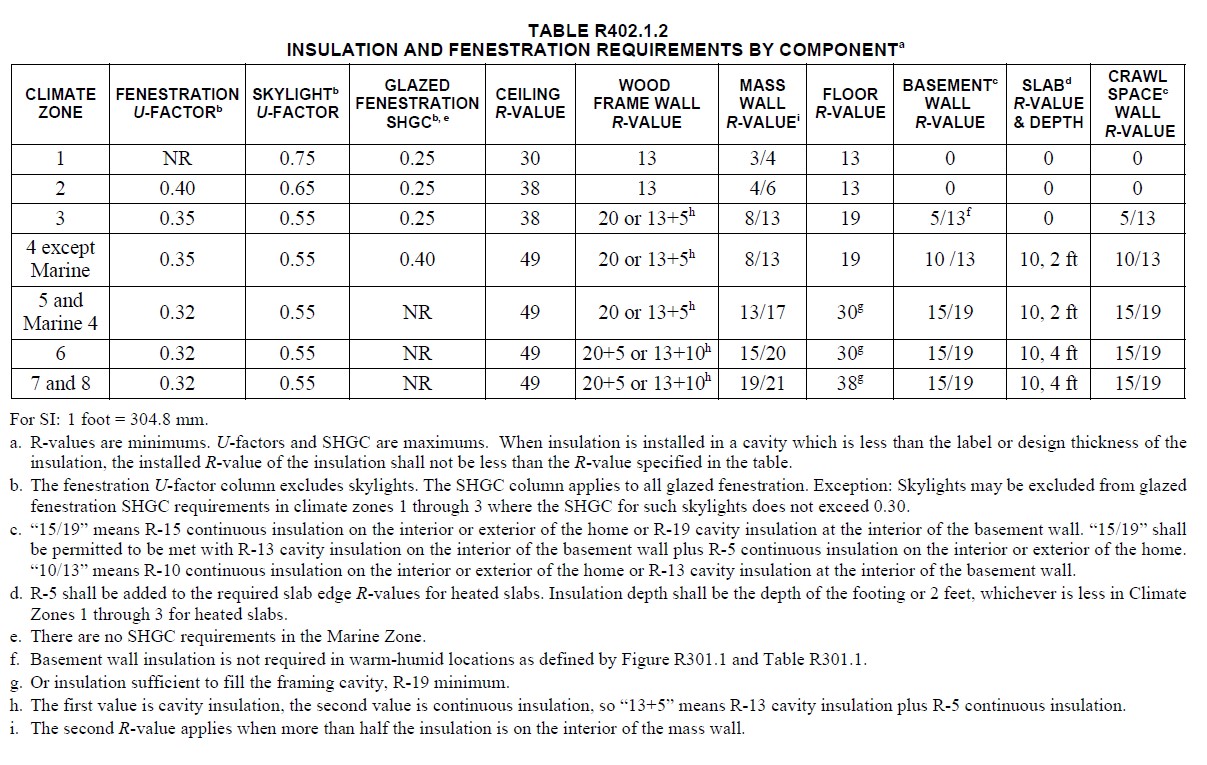EV+PV
There is much to like about Electric Vehicles (EVs). There is much to like about Solar Photovoltaic power collection (PV) too. But when you put the two together, something extra happens… You can now think of your solar system as being paid off, not by offsetting the cost of the electricity that runs your house, but by offsetting the cost of the gas you’re not buying.
Below, I am going to list the real-world drive data from our two company cars, a Nissan Leaf EV and a Prius Prime PHEV (Plug-in Hybrid Electric Vehicle). Sorry hybrids, you don’t get to play this game. Then I’ll list our real-world solar array data and calculate the value of the electricity we have harvested from our PV array. And answers some important questions; How much PV do I need to offset driving an EV or PHEV?
3.24 kW PV array:
Number of panels: 12
Power per panel: 344 watts
Annual production: 4,128 kWh
Cost after rebates: $5,796
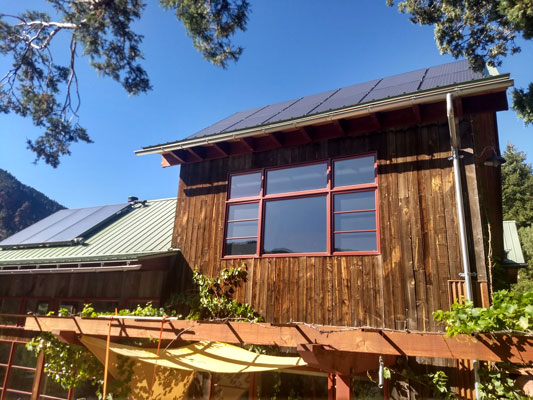
Thermal solar panels on lower roof, PV array on upper roof
The calculations will vary, of course, from place to place and car to car and driver to driver. These cars live in Carbondale, Colorado. The climate is pretty good for EVs; not too hot, not too cold. Typically highway driving punctuated by small towns. The road is never level, up valley, down valley, up the hill, down the hill. We run Blizzak winter tires for about five months, and Michelin Energy-savers the rest of the year. I’m no engineer; there is much rounding and estimating used in these calculations. For projections I will use these fuel values:
Street value of a kWh: $.11 (summer 2019)
Street value of a gallon of gas: $2.60 (summer 2019)
Total annual value of electricity produced by PV based on utility cost of kWh:
Total: $520
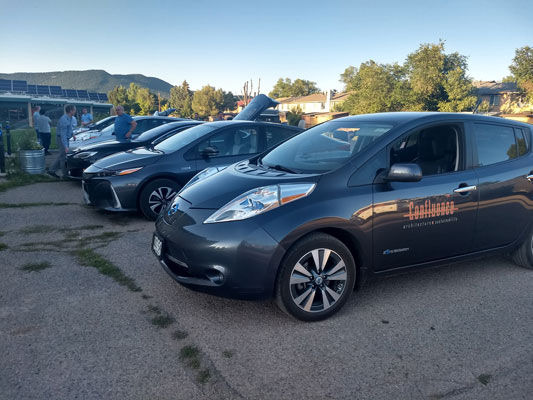
Confluence company cars at local EV event.
2013 Nissan Leaf EV, 24.0 kWh battery
Miles driven annually: 13,000
Miles/kWh: (average) 4.4 miles/kWh
Total kWh consumed: 3,022
Percentage of public charging: 10%
kWh provided by PV: 2,720
Leaf consumes: 66% of our production
Leaf consumes: 8.0 panels
Miles per panel: 1,463
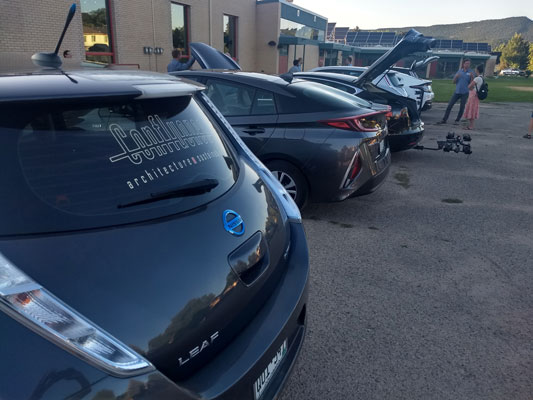
Confluence company cars at local EV event.
2018 Prius Prime PHEV, 8.8 kWh battery
Miles driven annually: 19,000
Hybrid ratio: 50% EV : 50% ICE (Internal Combustion Engine)
MPG: 80.5
Gallons of gas: 118
Cost of gas: $307
Miles/kWh: 5.4 miles/kWh
Total kWh consumed: 1,713
Percentage of public charging: 10%
kWh provided by PV: 1,542
Prius consumes: 37% of our production
Prius consumes: 4.5 panels
Miles per panel: 2,111
Total annual value of electricity produced by PV based on gasoline offset:
If 22,500 miles were driven in a gas drive vehicle (e.g. 2005 Subaru Outback, 32 MPG)
Gas offset EV portion of Prius: $772
Gas offset Leaf: $1,056
Total value of gas offset: $1,828 (703 gallons)
Every solar PV panel you put on your roof will push your EV 1,500-2,000 miles.
So, the bottom line is that our PV system makes us $520 worth of electricity annually, not bad. It would pay itself off in about 11 years at that rate. But when we put that electricity into an EV, it saves us from buying $1,828 worth of gas over our old ICE car, which translates to a 3.2 year payback!
